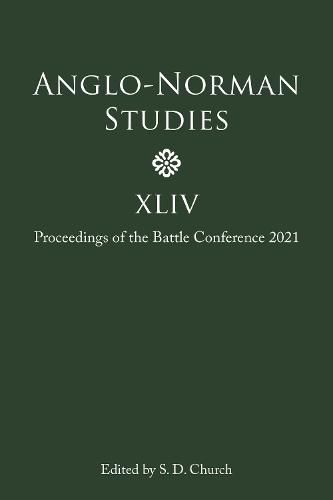Readings Newsletter
Become a Readings Member to make your shopping experience even easier.
Sign in or sign up for free!
You’re not far away from qualifying for FREE standard shipping within Australia
You’ve qualified for FREE standard shipping within Australia
The cart is loading…






The essays collected here demonstrate the rich vitality of scholarship in this area. This volume has a particular focus on the interrelations between the various parts of north-western Europe. After the opening piece on Lotharingia, there are detailed studies of the relationship between Ponthieu and its Norman neighbours, and between the Norman and Angevin duke-kings and the other French nobility, followed by an investigation of the world of demons and possession in Norman Italy, with additional observations on the subject in twelfth-century England. Meanwhile, the York massacre of the Jews in 1190 is set in a wider context, showing the extent to which crusader enthusiasm led to the pogroms that so marred Anglo-Jewish relations, not just in York but elsewhere in England; and there is an exploration of poverty in London, also during the 1190s, viewed through the prism of the life and execution of William fitz Osbert. Another chapter demonstrates the power of comparative history to illuminate the norms of proprietary queenship, so often overlooked by historians of both kingship and queenship. And two essays focusing on landscape bring the physical into close association with the historical: on the equine landscape of eleventh and twelfth-century England, adding substantially to our understanding of the place of the horse in late Anglo-Saxon and early Anglo-Norman societies, and on the Brut narratives of Geoffrey of Monmouth, Wace, and Lazamon, arguing that they use realistic landscapes in their depiction of the action embedded in their tales, so demonstrating the authors’ grasp of the practical realities of contemporary warfare and the role played by landscapes in it.
$9.00 standard shipping within Australia
FREE standard shipping within Australia for orders over $100.00
Express & International shipping calculated at checkout
The essays collected here demonstrate the rich vitality of scholarship in this area. This volume has a particular focus on the interrelations between the various parts of north-western Europe. After the opening piece on Lotharingia, there are detailed studies of the relationship between Ponthieu and its Norman neighbours, and between the Norman and Angevin duke-kings and the other French nobility, followed by an investigation of the world of demons and possession in Norman Italy, with additional observations on the subject in twelfth-century England. Meanwhile, the York massacre of the Jews in 1190 is set in a wider context, showing the extent to which crusader enthusiasm led to the pogroms that so marred Anglo-Jewish relations, not just in York but elsewhere in England; and there is an exploration of poverty in London, also during the 1190s, viewed through the prism of the life and execution of William fitz Osbert. Another chapter demonstrates the power of comparative history to illuminate the norms of proprietary queenship, so often overlooked by historians of both kingship and queenship. And two essays focusing on landscape bring the physical into close association with the historical: on the equine landscape of eleventh and twelfth-century England, adding substantially to our understanding of the place of the horse in late Anglo-Saxon and early Anglo-Norman societies, and on the Brut narratives of Geoffrey of Monmouth, Wace, and Lazamon, arguing that they use realistic landscapes in their depiction of the action embedded in their tales, so demonstrating the authors’ grasp of the practical realities of contemporary warfare and the role played by landscapes in it.